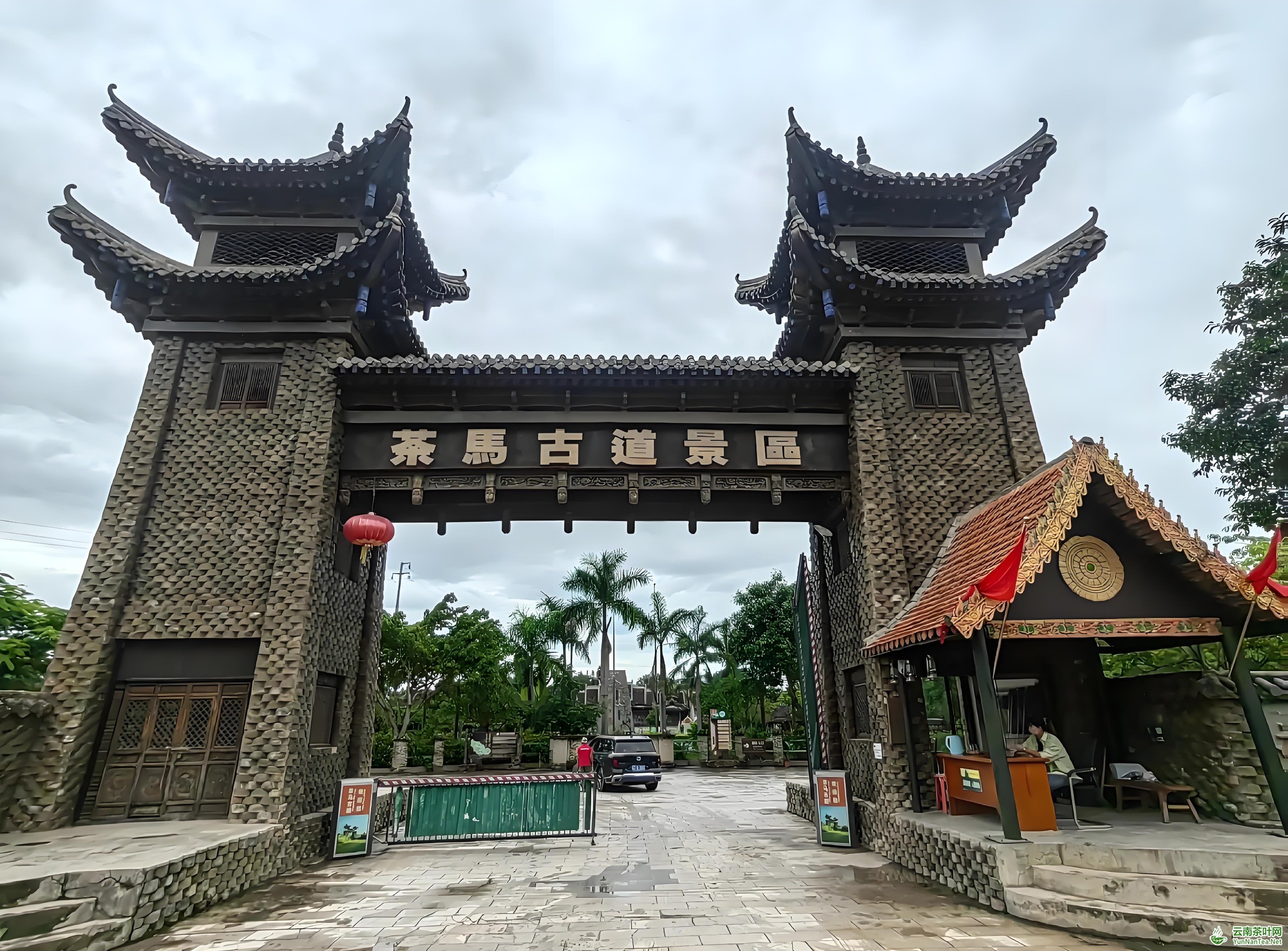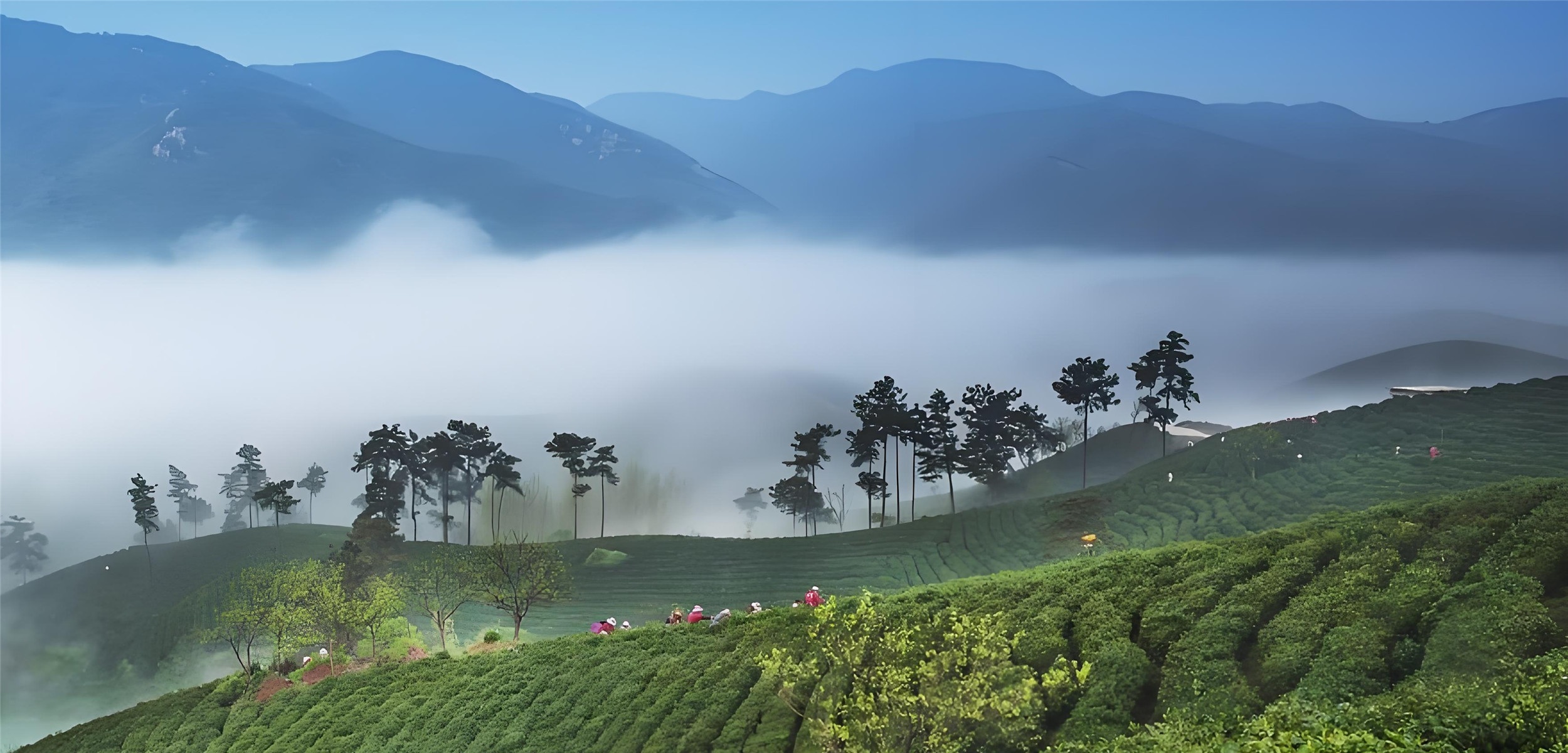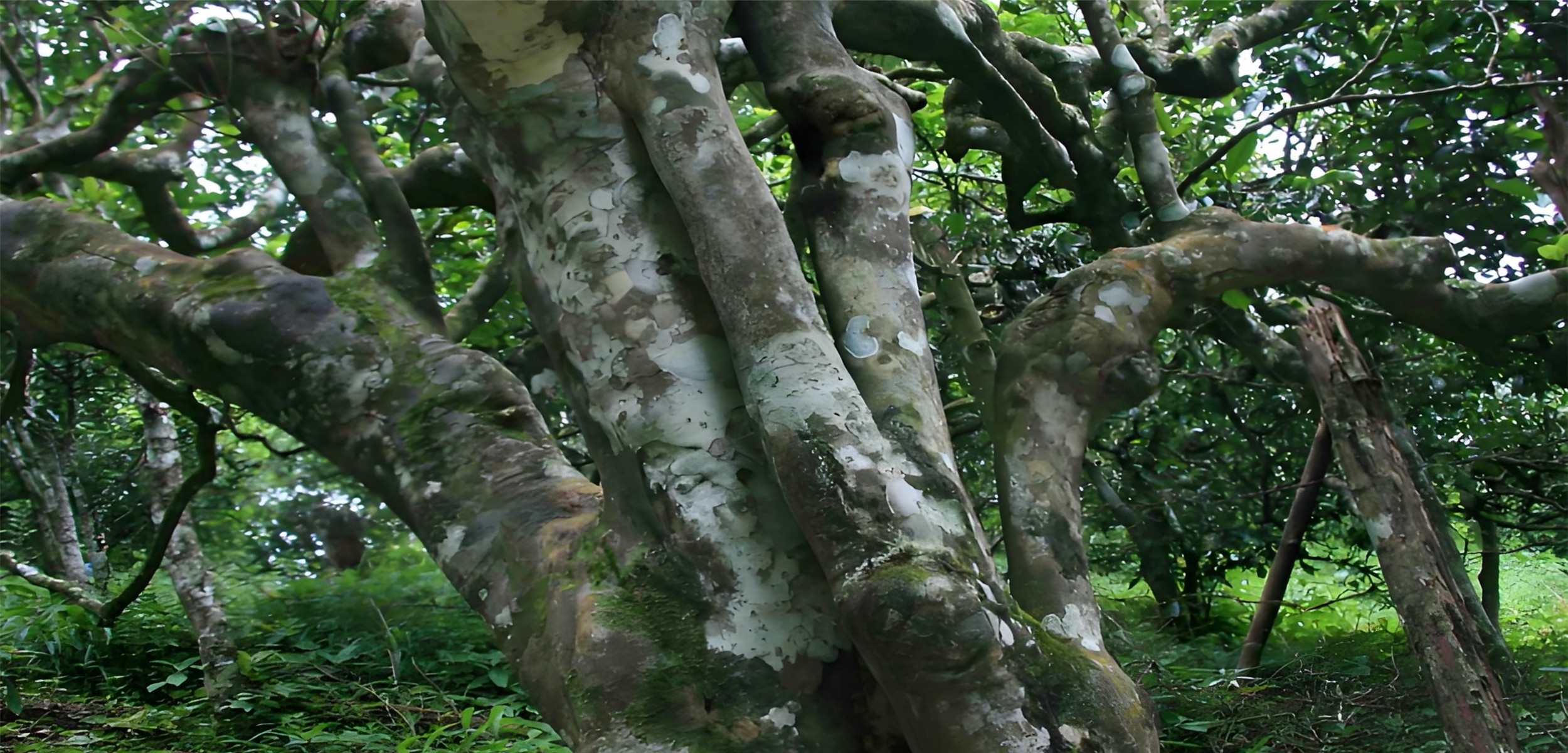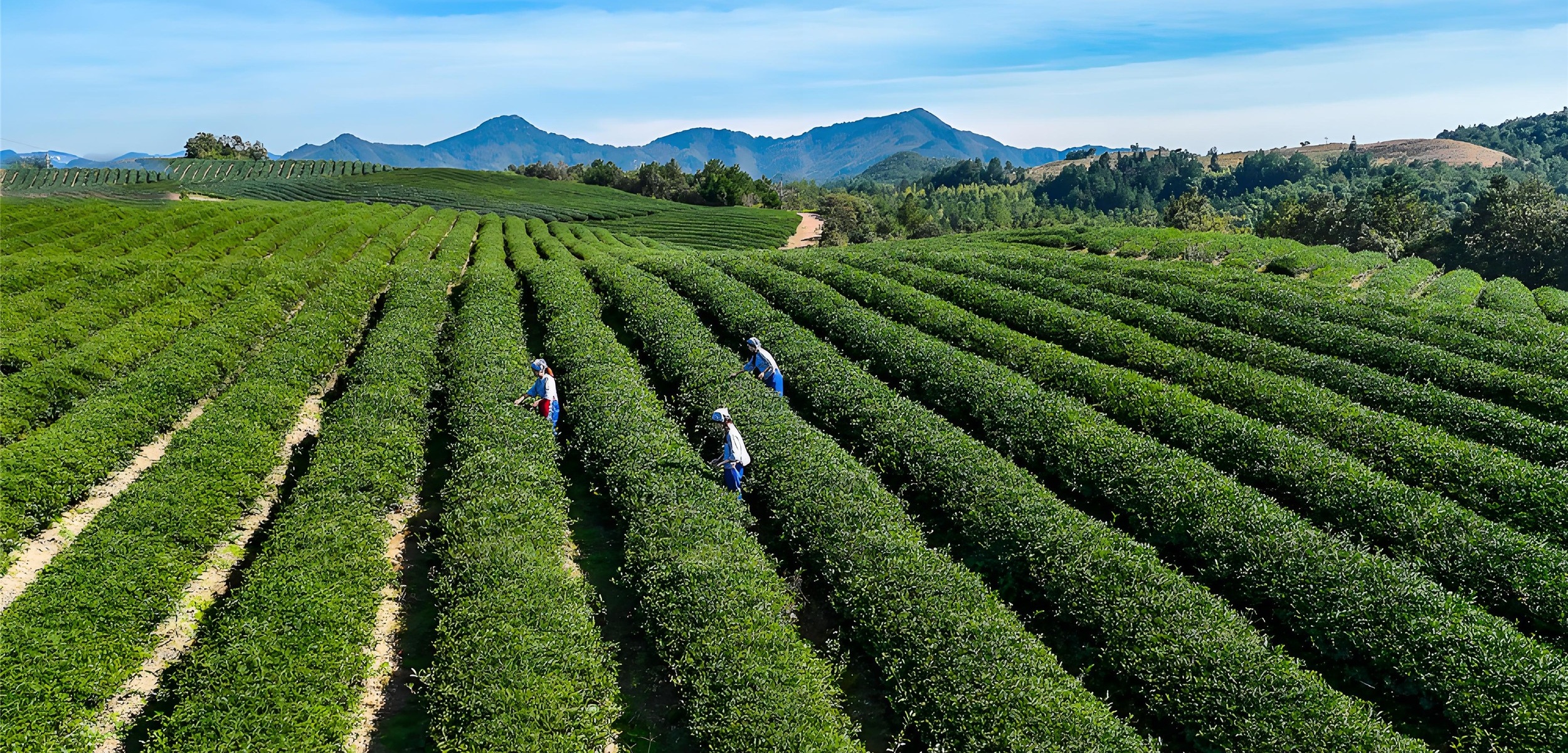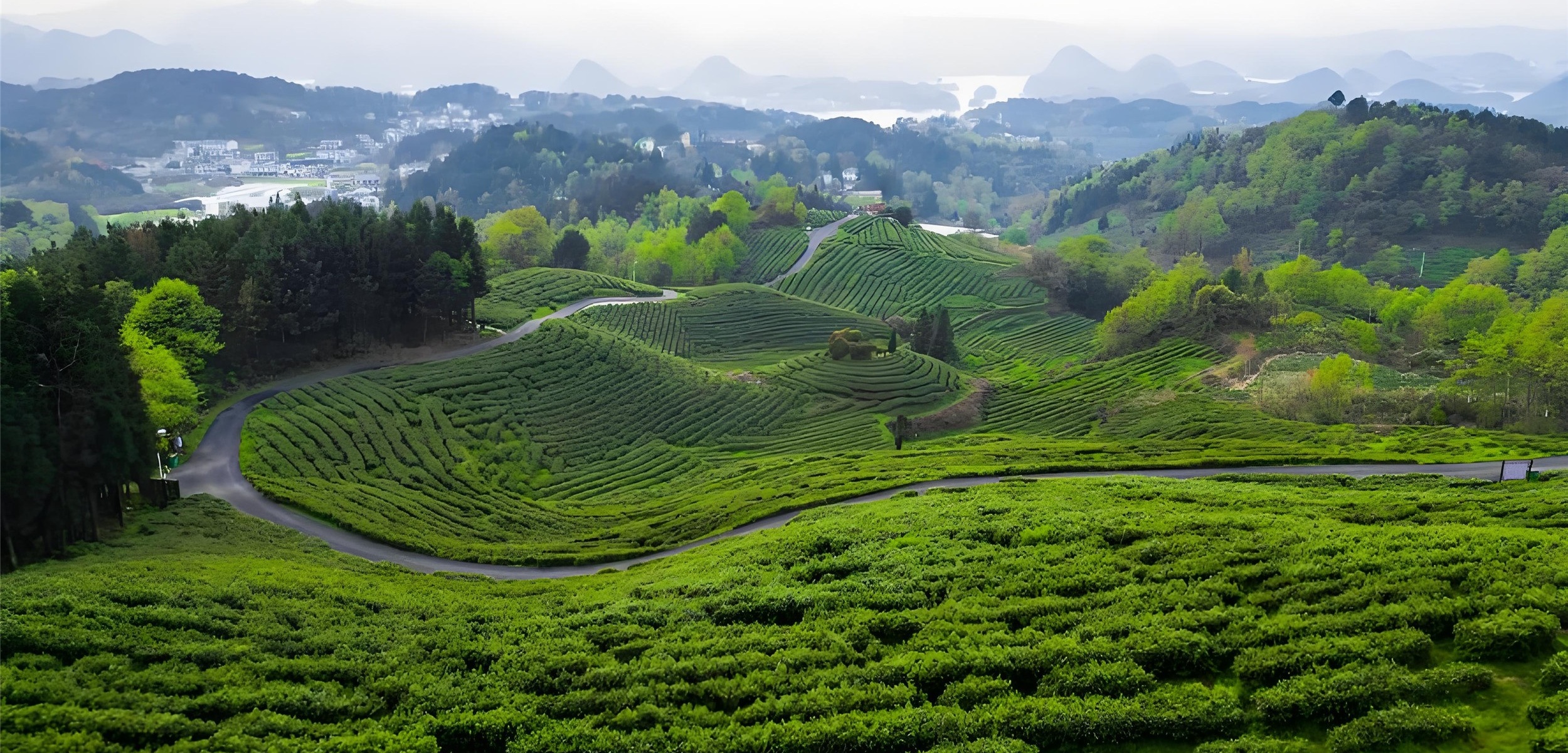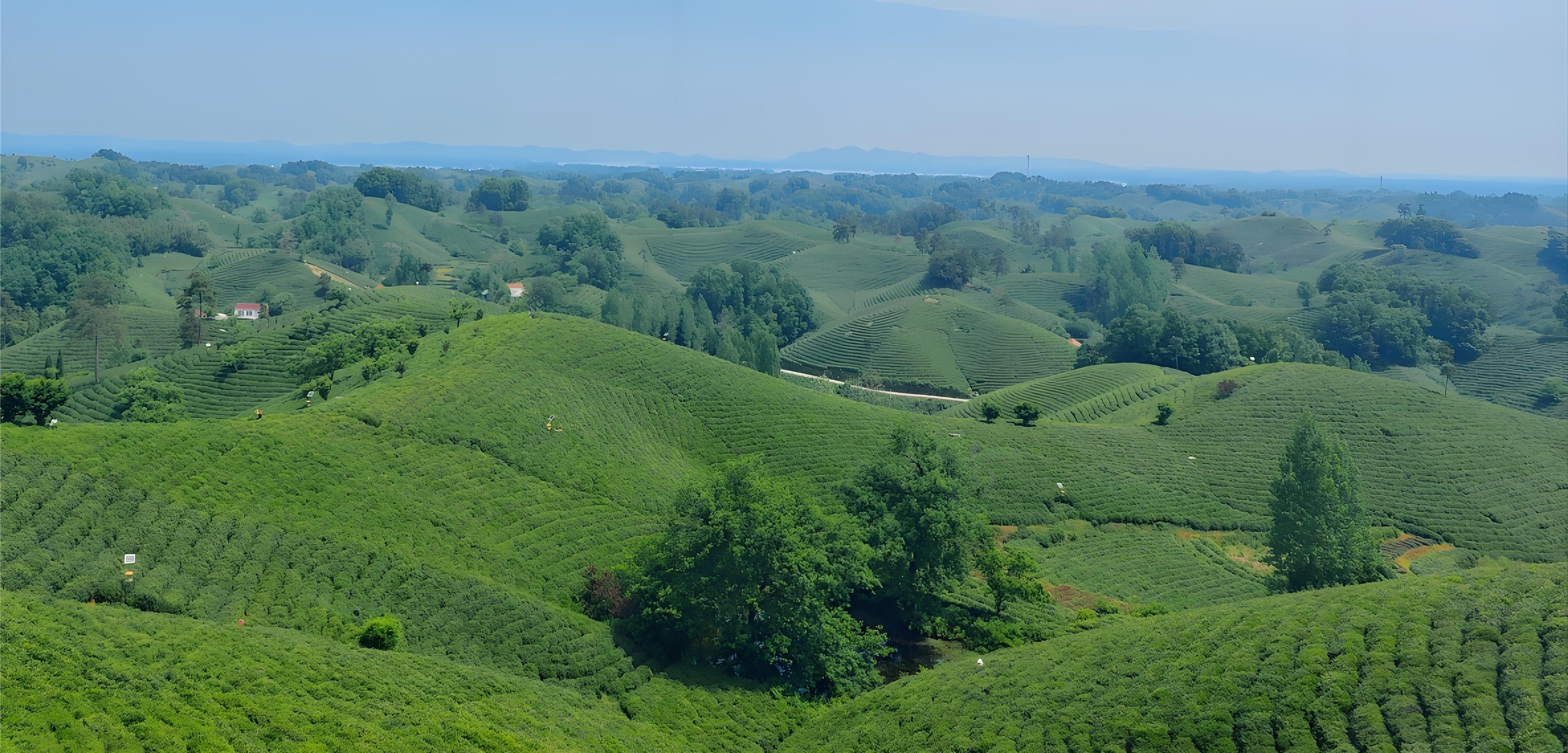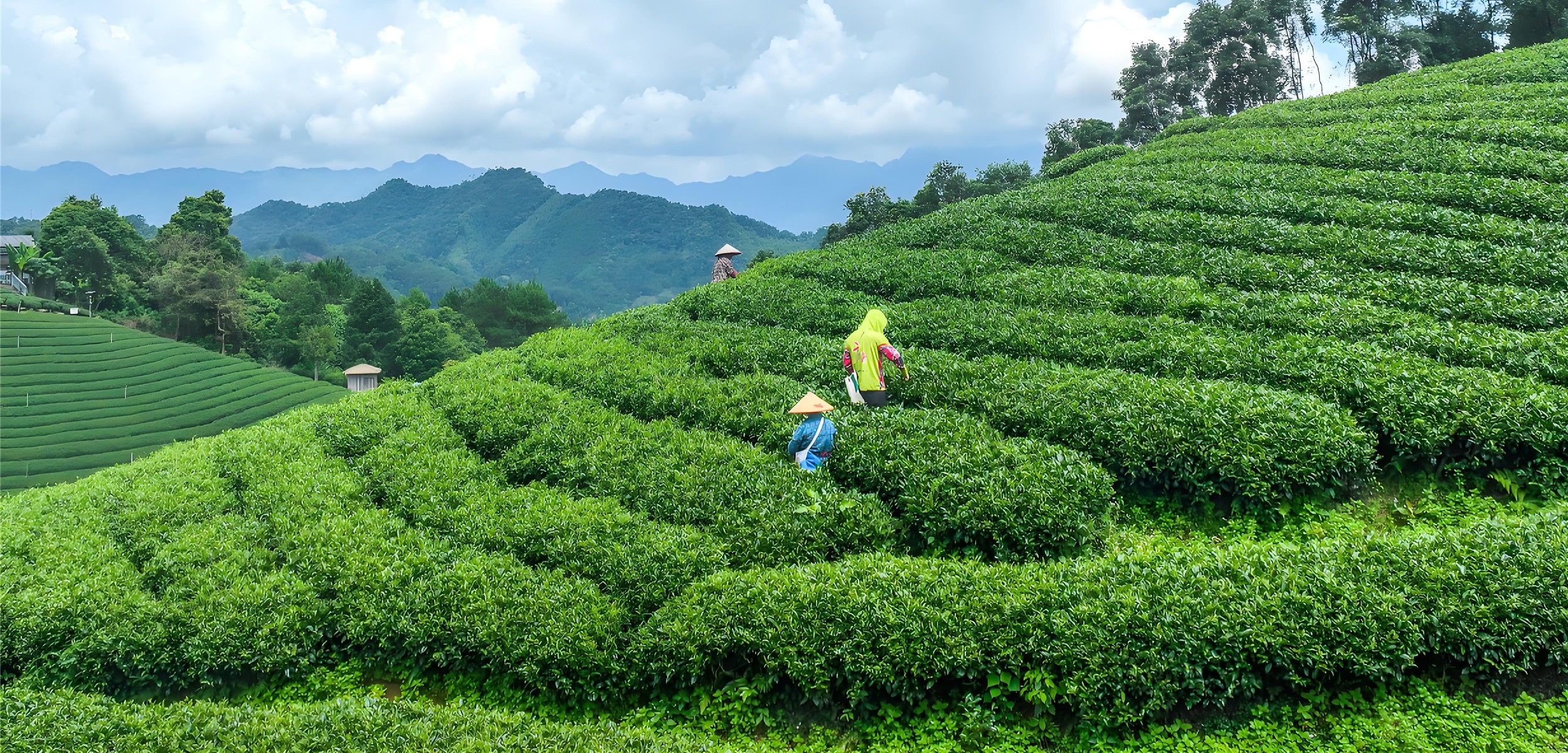茶马古道 tea-horse road
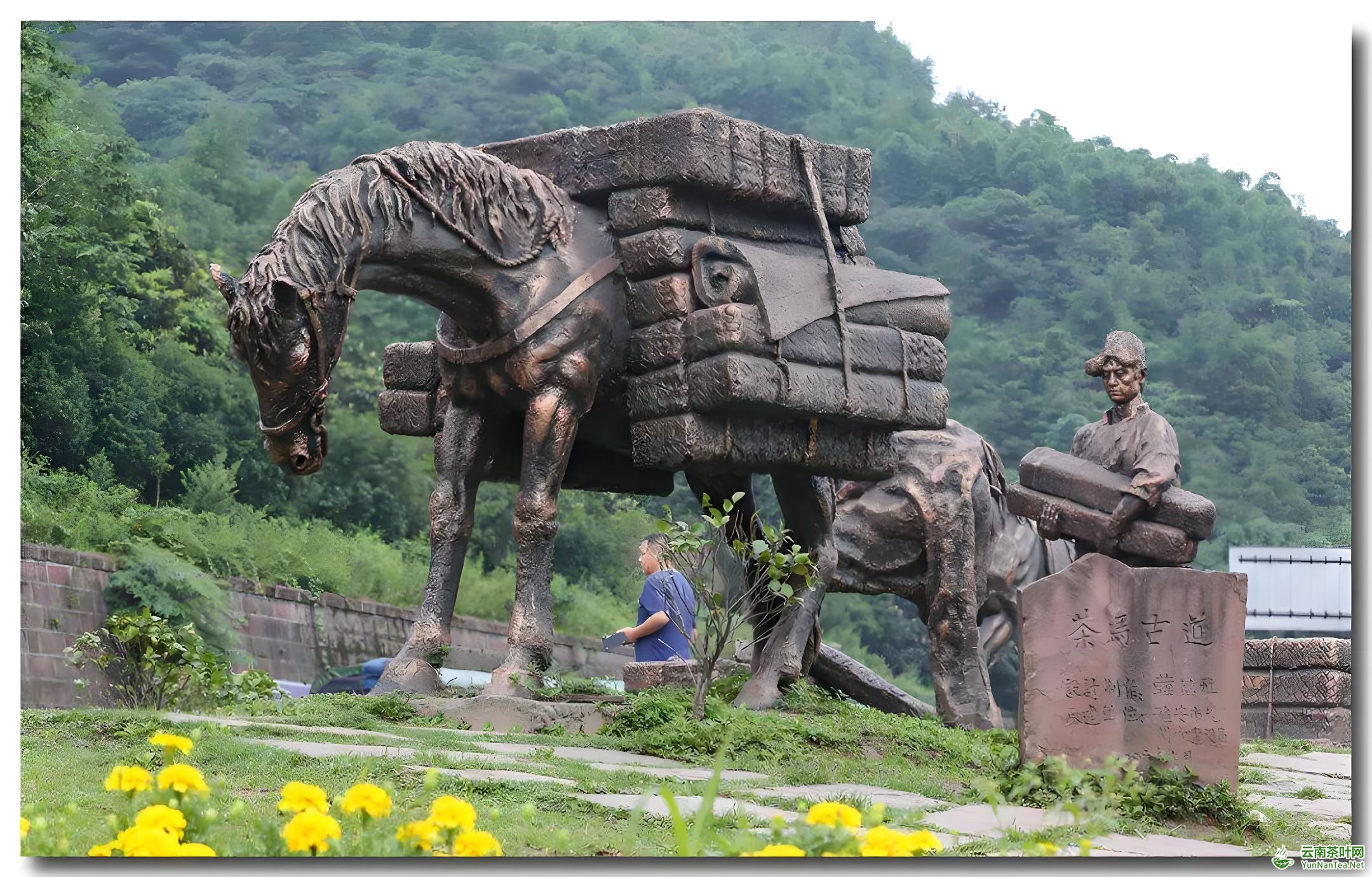
茶马古道:连接历史与文明的千年商道
茶马古道是中国西南地区以茶叶和马匹为核心贸易商品,串联川、滇、藏及周边东南亚、南亚区域的古代商贸通道,兼具经济、文化、民族融合多重价值,被誉为“南方丝绸之路”的重要分支。
一、核心定义与历史起源
茶马古道并非单一路线,而是由多条支线构成的庞大交通网络,核心功能是解决古代藏区对茶叶的刚需与内地对马匹的需求。其起源可追溯至唐代,当时藏区“嗜茶如命”,茶叶能解高原肉食油腻、补充维生素;而内地(尤其唐宋后)因军事、运输需要,急需藏区良马,“以茶易马”的贸易模式逐渐形成,为古道奠定基础。至明清时期,贸易规模达顶峰,路线体系也更成熟。
二、主要路线分布
茶马古道主要分为三大干线,覆盖不同地理区域,适配多样运输方式:
川藏线:从四川雅安出发,经康定、理塘、巴塘,进入西藏昌都,最终抵达拉萨,再延伸至尼泊尔、印度。此线穿越横断山脉,多为高山峡谷,部分路段需翻越海拔4000米以上的垭口,是三条路线中海拔最高、难度最大的。
滇藏线:以云南普洱、大理为起点,经丽江、香格里拉、德钦,过梅里雪山垭口后进入西藏芒康,与川藏线汇合。该路线途经云南多民族聚居区,沿途气候湿润,植被丰富,贸易商品除茶叶、马匹外,还多了药材、布匹等。
陕甘青藏线:从陕西汉中、甘肃文县出发,经青海西宁、玉树,进入西藏那曲,最终抵达拉萨。此线连接西北与西南,历史上是汉、藏、回等民族贸易的重要通道,除茶马贸易外,还涉及皮毛、粮食等商品交换。
三、贸易核心与运作模式
1. 核心商品:贸易以“茶”和“马”为核心。内地输出的茶叶多为紧压茶(如普洱茶砖、雅安藏茶),便于长期运输和储存;藏区输出的马匹以耐寒、耐力强的藏马为主,是古代军队和民间运输的重要工具。此外,贸易还涵盖盐、糖、丝绸、药材、皮毛等,形成多元商品交换体系。
2. 运输方式:受地形限制,古道运输主要依赖人力和畜力。人力以“背夫”为主,他们背负数十斤茶叶,用拐杖支撑身体,在陡峭山路中前行;畜力则以马帮为核心,一支马帮通常有数十至上百匹马,配备赶马人、向导,沿途需应对暴雨、滑坡、盗匪等风险,日行仅20-30公里。
3. 贸易机制:明清时期,朝廷为规范贸易,实行“茶马互市”制度,在沿途设置“茶马司”,负责管理茶叶收购、马匹验收和贸易税收。民间贸易则通过马帮与沿途驿站、商号合作,形成“以物易物+货币补充”的模式,例如“一驮茶换一匹马”(一驮茶约100斤),具体比例随市场供需调整。
四、文化与民族融合价值
茶马古道不仅是商道,更是文化与民族的“融合之路”:
宗教传播:佛教(尤其是藏传佛教)沿古道传播,沿途修建了大昭寺、松赞林寺、塔公寺等寺庙,成为信徒朝圣的重要路线;同时,内地的道教、儒家文化也通过贸易影响藏区,形成多元宗教共存的格局。
民族交流:汉、藏、彝、白、纳西等多个民族在贸易中频繁互动,逐渐形成“茶马古道文化圈”。例如,云南丽江纳西族的马帮文化、四川康定的“锅庄舞”、西藏昌都的“弦子舞”,都融入了不同民族的艺术元素;饮食上,藏区的酥油茶、云南的普洱茶宴,也成为跨民族的饮食符号。
文化遗产:古道沿途留存了大量历史遗迹,如云南剑川沙溪古镇(茶马古道唯一幸存集市)、四川炉霍石棺墓群、西藏芒康盐井古盐田等,这些遗迹见证了古道的繁荣,如今多被列为全国重点文物保护单位。
五、现代意义与保护传承
如今,茶马古道的商贸功能已被现代交通取代,但仍具有重要的现实价值:
旅游资源:川藏线、滇藏线的部分路段(如丽江至香格里拉、昌都至林芝)成为热门旅游路线,游客可徒步或自驾体验古道风情,感受“马帮文化”,带动沿线少数民族地区经济发展。
文化符号:2013年,茶马古道被列入“全国重点文物保护单位”,其“坚韧、协作、包容”的马帮精神,成为中国西南地区的文化象征;2021年,“普洱景迈山古茶林文化景观”(茶马古道重要遗址)入选世界文化遗产,进一步提升了古道的国际影响力。
经济纽带:古道沿线的茶叶、藏香、手工艺品等特色产品,借助“茶马古道”品牌效应走向全国,成为当地乡村振兴的重要支撑,延续了古道“互利共赢”的核心精神。
从唐代的零星贸易到明清的繁华商道,再到如今的文化遗产,茶马古道跨越千年,不仅承载了物资交换的功能,更见证了中国西南地区多民族的融合与文明的互鉴,是中华文明“多元一体”格局的生动缩影。
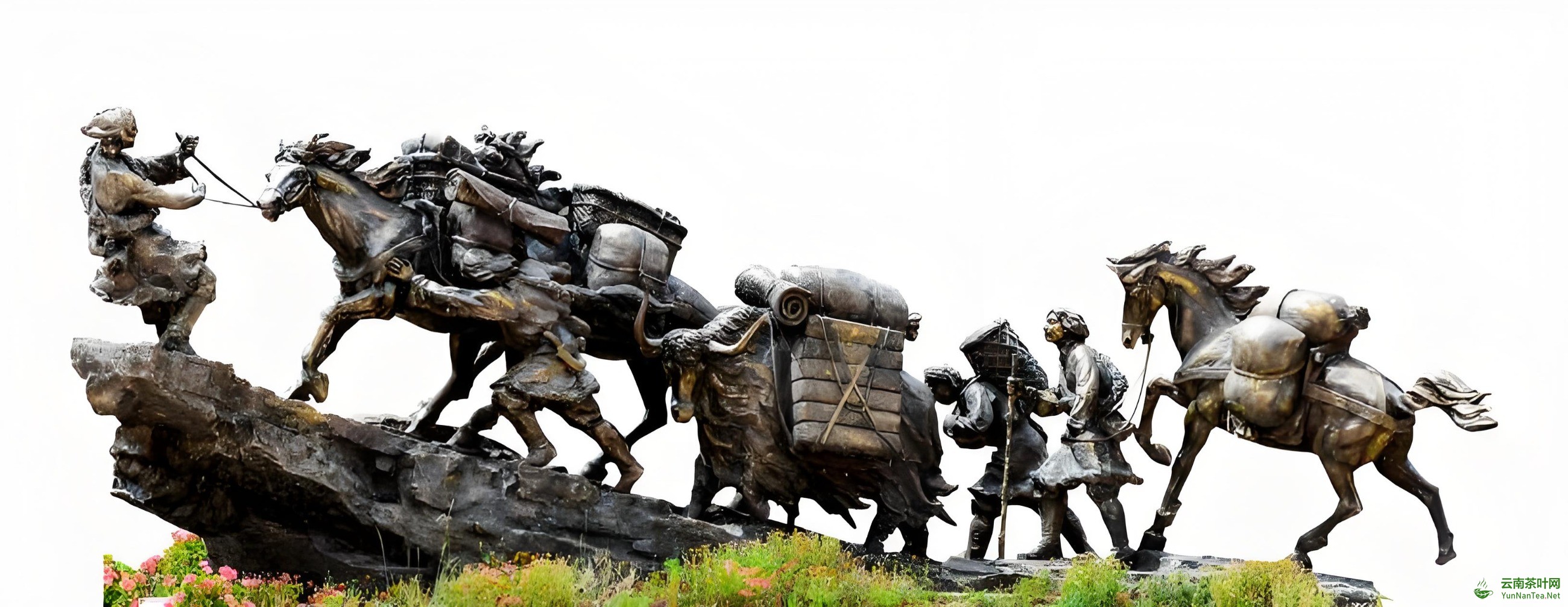
Tea Horse Ancient Road: A Millennium Commercial Road Connecting History and Civilization
The Tea Horse Ancient Road is an ancient trade route in southwestern China, with tea and horses as the core trading commodities, connecting Sichuan, Yunnan, Tibet, and surrounding Southeast and South Asian regions. It has multiple values of economic, cultural, and ethnic integration, and is known as an important branch of the "Southern Silk Road".
1、 Core Definition and Historical Origins
The Tea Horse Ancient Road is not a single route, but a vast transportation network consisting of multiple branches. Its core function is to meet the urgent demand for tea in ancient Tibetan areas and the demand for horses in the mainland. Its origin can be traced back to the Tang Dynasty, when the Tibetan region was obsessed with tea. Tea could relieve the greasiness of plateau meat and supplement vitamins; Due to military and transportation needs, the mainland (especially after the Tang and Song dynasties) urgently needed good horses from Tibetan areas. The trade model of "exchanging tea for horses" gradually formed, laying the foundation for the ancient road. During the Ming and Qing dynasties, the scale of trade reached its peak and the route system became more mature.
2、 Main route distribution
The Tea Horse Ancient Road is mainly divided into three main routes, covering different geographical regions and adapting to various transportation modes:
Sichuan Tibet line: starting from Ya'an, Xizang, passing through Kangding, Litang, Batang, entering Changdu, Tibet, and finally arriving at Lhasa, then extending to Nepal and India. This route crosses the Hengduan Mountains, mostly consisting of high mountain valleys. Some sections of the route require crossing mountain passes with an altitude of over 4000 meters, making it the highest and most difficult route among the three.
Yunnan Tibet Line: Starting from Puer and Dali in Yunnan, it passes through Lijiang, Shangri La and Deqin, passes through Meili Snow Mountain Pass, and then enters Mangkang in Xizang, joining the Sichuan Tibet Line. This route passes through a multi-ethnic settlement area in Yunnan, with a humid climate and abundant vegetation along the way. In addition to tea and horses, the trade commodities also include medicinal herbs, fabrics, and so on.
Shaanxi Gansu Qinghai Tibet Railway: Starting from Hanzhong, Shaanxi, Wenxian County, Gansu, passing Xining, Yushu, Xizang, entering Naqu, Tibet, and finally arriving at Lhasa. This line connects the northwest and southwest, and has historically been an important channel for trade between Han, Tibetan, Hui and other ethnic groups. In addition to tea and horse trade, it also involves the exchange of goods such as fur and grain.
3、 Trade Core and Operation Mode
1. Core commodities: Trade revolves around "tea" and "horses". The tea exported from mainland China is mostly compressed tea (such as Pu'er tea bricks and Ya'an Tibetan tea), which is convenient for long-term transportation and storage; The horses exported from Tibet are mainly cold resistant and strong endurance Tibetan horses, which were important tools for ancient military and civilian transportation. In addition, trade also includes salt, sugar, silk, medicinal herbs, fur, etc., forming a diversified commodity exchange system.
2. Transportation mode: Due to terrain limitations, ancient road transportation mainly relies on human and animal labor. Human labor is mainly carried by "porters", who carry dozens of pounds of tea leaves, use crutches to support their bodies, and move forward on steep mountain roads; The animal force is centered on the caravan. A caravan usually has dozens to hundreds of horses, equipped with horse drivers and guides, and needs to deal with the risks of rainstorm, landslides, bandits and so on along the way. The daily journey is only 20-30 kilometers.
3. Trade mechanism: During the Ming and Qing dynasties, the court implemented the "Tea Horse Exchange" system to regulate trade. Along the way, "Tea Horse Companies" were set up to manage tea purchases, horse inspections, and trade taxes. Folk trade, on the other hand, forms a "barter+currency supplement" model through cooperation between horse gangs and stations and merchants along the way, such as "exchanging one pack of tea for one horse" (one pack of tea weighs about 100 pounds), with specific proportions adjusted according to market supply and demand.
4、 Value of cultural and ethnic integration
The Tea Horse Ancient Road is not only a commercial route, but also a "fusion road" of culture and ethnicity:
Religious dissemination: Buddhism (especially Tibetan Buddhism) spread along ancient routes, with the construction of temples such as Jokhang Temple, Songzanlin Temple, and Tagong Temple along the way, becoming an important pilgrimage route for believers; At the same time, Taoism and Confucian culture in mainland China have also influenced Tibetan areas through trade, forming a pattern of coexistence of multiple religions.
Ethnic exchange: Multiple ethnic groups such as Han, Tibetan, Yi, Bai, and Naxi frequently interact in trade, gradually forming the "Tea Horse Ancient Road Cultural Circle". For example, the horse gang culture of the Naxi nationality in Lijiang, Yunnan, the "Guozhuang dance" in Kangding, Sichuan, and the "Xianzi dance" in Changdu, Xizang, are all integrated with the artistic elements of different nationalities; In terms of cuisine, Tibetan butter tea and Yunnan Pu'er tea banquets have also become symbols of cross ethnic cuisine.
Cultural heritage: A large number of historical sites have been preserved along the ancient road, such as the ancient town of Shaxi in Jianchuan, Yunnan (the only surviving market on the ancient tea and horse road), the Stone Coffin Tombs in Luhuo, Sichuan, and the ancient salt fields in Mangkang, Xizang. These sites have witnessed the prosperity of the ancient road, and are now listed as national key cultural relics protection units.
5、 Modern significance and protection of inheritance
Nowadays, the commercial function of the Tea Horse Ancient Road has been replaced by modern transportation, but it still has important practical value:
Tourism resources: Some sections of the Sichuan Tibet Highway and Yunnan Tibet Highway (such as Lijiang to Shangri La and Chamdo to Nyingchi) have become popular tourist routes. Tourists can experience the ancient customs on foot or by self driving, feel the "caravan culture", and drive the economic development of ethnic minority areas along the route.
Cultural Symbols: In 2013, the Tea Horse Ancient Road was listed as a "National Key Cultural Relics Protection Unit", and its "resilient, collaborative, and inclusive" spirit of the caravan has become a cultural symbol of Southwest China; In 2021, the "Pu'er Jingmai Mountain Ancient Tea Forest Cultural Landscape" (an important site of the Tea Horse Ancient Road) was selected as a World Cultural Heritage site, further enhancing the international influence of the ancient road.
Economic Link: Featured products such as tea, Tibetan incense, and handicrafts along the ancient road, leveraging the brand effect of the "Tea Horse Ancient Road", have spread nationwide and become an important support for local rural revitalization, continuing the core spirit of "mutual benefit and win-win" of the ancient road.
From sporadic trade in the Tang Dynasty to prosperous commercial routes in the Ming and Qing Dynasties, and now to cultural heritage, the Tea Horse Ancient Road spans thousands of years. It not only carries the function of material exchange, but also witnesses the integration of multiple ethnic groups and mutual learning of civilizations in Southwest China. It is a vivid epitome of the "diversity and unity" pattern of Chinese civilization.
